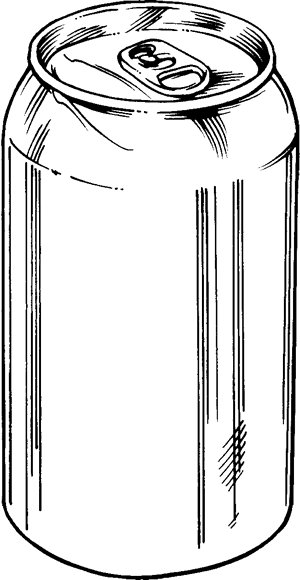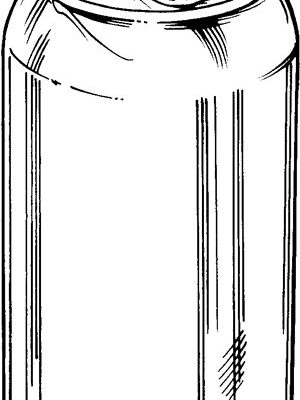
Let’s say you just snagged a gently used Whirlpool refrigerator from your neighbor down the hall—or maybe you’re thinking of selling your trusty dishwasher because your new place already has one. Either way, you can’t help but wonder: Can you transfer the warranty on Whirlpool kitchen appliances to a new owner? It’s a classic “Do these shoes come in my size?” moment, but with a lot more paperwork and maybe a little less excitement.
Whirlpool, as a big brand in the world of kitchen appliances, has some clear rules about who gets warranty coverage and how it works. If you’re like most people, the details around appliance warranties can feel like reading instructions for syncing a remote—confusing at first, but easier once someone breaks it down for you. Let’s walk through how Whirlpool handles warranty transfers, why it matters, and what you can actually expect if you’re buying or selling a used Whirlpool appliance.
What Whirlpool’s Kitchen Appliance Warranties Typically Cover
Before diving into whether you can transfer a warranty, it helps to know what the Whirlpool warranty actually covers. Whirlpool offers warranties on everything from refrigerators and ovens to dishwashers and microwaves. These warranties usually promise to repair or replace parts that fail due to defects in materials or workmanship. It’s a safety net for common scenarios—like your oven refusing to heat up or a fridge that’s suddenly more sauna than arctic.
The length of the warranty varies by product. Most Whirlpool appliances come with a one-year limited warranty that covers labor and parts. For some components, like major sealed systems in refrigerators, coverage can stretch up to five or even ten years (but only for parts, not labor). Honestly, it’s worth reading the paperwork that comes with your appliance or checking Whirlpool’s website for the fine print.
What’s usually not covered? Anything that smells like user error—like damage from power surges, using the wrong kind of cleaner, or trying to reset a stubborn appliance with a hammer. Unapproved modifications, cosmetic damage, and normal wear and tear are also not covered. These details matter, especially if you’re planning to buy or sell a used Whirlpool kitchen appliance, since the warranty is only helpful for certain problems.
And here’s the thing: warranties are different from service contracts or extended protection plans, which you might buy from a retailer or third-party company. Those have their own rules for transfer, so always read the specifics on any extra coverage or “codes” that may come with your appliance purchase.
Is the Whirlpool Appliance Warranty Transferable?
This is probably the part you’re most eager to know: Can you transfer a Whirlpool warranty to the new owner? Unfortunately, in almost every case, Whirlpool’s original manufacturer warranty is not transferable to a subsequent owner. That means if you buy a used Whirlpool kitchen appliance, you usually won’t get the benefits of the original warranty, even if there’s time left on it.
Here’s why: Whirlpool’s warranties are generally tied to the original purchaser and the original installation location. When you buy a new appliance, you’re covered as long as you keep the appliance installed in your home. If you move or sell it, the warranty typically ends. This is spelled out in the warranty documents and on Whirlpool’s official website. Even if you carefully reset or sync the appliance after moving, it doesn’t magically reactivate coverage for a new owner.
That might sound a bit harsh, but it’s standard in the appliance industry. Whirlpool—and most other big brands—take this approach to limit their liability and discourage people from flipping used appliances with “fresh” warranties attached. If you’re selling or buying a Whirlpool kitchen appliance, it’s best to assume that the warranty isn’t part of the deal unless stated otherwise in the paperwork.
So, if someone offers you a “still-under-warranty” used Whirlpool dishwasher, double-check the documents and call Whirlpool customer service to confirm. Don’t just take a seller’s word for it, and never assume the warranty code will work for you the same way it did for the original owner.
How to Check if a Whirlpool Appliance Warranty Is Still Active
Let’s say you’re standing in front of a shiny (but secondhand) Whirlpool stove, and the seller swears it’s got years left on the warranty. How do you know if that promise holds water?
First, locate the appliance’s serial number and model number, usually found inside the door or on a sticker around the edge. You’ll need this info to do any real troubleshooting with Whirlpool’s customer support or to check the warranty status. Next, contact Whirlpool directly—either through their website’s warranty lookup tool or by calling their customer service number. Be ready to share the serial and model numbers, as well as information about when and where the appliance was purchased.
Remember, even if the warranty is still active for the original owner, it likely won’t transfer to you as the new owner. But checking is smart, especially if the seller claims otherwise or if you’re hoping to buy an extended protection plan. Sometimes you might still have options for purchasing extra coverage (more on that in a minute), but you’ll only know for sure by verifying with Whirlpool.
One last tip—don’t forget to ask for the original purchase receipt or proof of purchase when buying used. Even though it rarely helps with transfers, it can clear up confusion about the appliance’s age, purchase history, and whether it was ever registered for warranty in the first place. Remember, Whirlpool can’t help you troubleshoot or pair up coverage if you don’t have the basic info.
What About Extended Protection Plans or Third-Party Warranties?
You might be wondering, “Okay, the original warranty doesn’t transfer—what about extended plans?” Here’s where things get a little interesting. Extended protection plans (sometimes called service contracts) are usually provided by retailers or third-party companies like Assurant or SquareTrade, not Whirlpool directly. The rules for transferring these plans can vary, so don’t assume they’re just like the manufacturer’s warranty.
For example, some extended plans do allow transfers—but you often need to fill out specific paperwork, pay a transfer fee, or meet other requirements right after the sale. Others, just like the original Whirlpool warranty, are totally non-transferable. Always check the terms and conditions—or ask the company directly—before assuming coverage will move with the appliance.
If you’re selling your Whirlpool kitchen appliance and want to sweeten the deal, see if you can transfer your extended plan to the new owner. If you’re buying, ask for documentation about any extra coverage. In both cases, make sure to get everything in writing, including the service contract number, date of purchase, and any “reset” instructions if the plan requires you to re-register after transfer.
Extended protection plans can sometimes offer more flexibility than Whirlpool’s original warranty, but it pays to read the fine print. Don’t get stuck troubleshooting your coverage after the sale—be proactive about checking transferability before handing over cash or goods.
Alternatives and Extra Protection for Secondhand Appliances
So you’re interested in a secondhand Whirlpool appliance, but the warranty can’t be transferred. Now what? Don’t panic—there are still ways to protect yourself from unexpected breakdowns or troubleshooting headaches.
- Buy with a credit card: Some credit cards offer purchase protection or extended warranty benefits for electronics and appliances. If you buy a used Whirlpool fridge from a reputable dealer, your card might offer some coverage—just read the details first.
- Look for reputable used appliance dealers: Some dealers offer their own short-term warranties or return policies. It’s not the same as the Whirlpool factory coverage, but it could cover initial failures.
- Consider a home warranty or protection plan: Companies like American Home Shield and others offer home warranty plans that cover appliances regardless of age or original warranty status. This option might make sense if you have several older appliances and want peace of mind.
- DIY troubleshooting and maintenance: Learn some basic maintenance and troubleshooting tips for your Whirlpool appliance. Sometimes, codes or error messages are easy to reset or fix without professional help. Whirlpool’s website and user manuals are great resources for this.
All these alternatives have their quirks, so weigh the costs against the benefits. And remember: even the most careful syncing, pairing, or code-resetting won’t change the official Whirlpool warranty rules.
Things to Watch Out for When Buying or Selling Used Whirlpool Appliances
Let me explain: When you’re dealing with used Whirlpool kitchen appliances, it’s easy to get caught up in the excitement of a deal and forget about the boring (but important) stuff—like warranty coverage. Here are a few things to keep in mind as you buy or sell:
- Misleading “still under warranty” claims: If someone claims the Whirlpool warranty will magically cover you, double-check that info. Most of the time, it’s wishful thinking—not reality.
- Missing paperwork or registration info: If the original owner never registered the appliance, even they might not get warranty coverage. Always ask for receipts or proof of purchase, and don’t expect the warranty code to transfer.
- Condition of the appliance: If a used appliance looks worn, ask about its repair history, code resets, or troubleshooting needs. Sometimes a unit is sold not because of age, but because it’s had a tricky problem that only disappears with a hard reset or battery change (especially with electronic control panels).
- No recourse for hidden damage: If you find a major issue after buying, Whirlpool probably won’t step in—unless you have a separate coverage that’s been officially transferred.
Basically, knowledge is your best defense. Take your time, ask smart questions, and don’t assume anything about coverage, troubleshooting, or warranty transfers.
What to Do If You Need Service on a Used Whirlpool Appliance
Let’s say you’ve just moved into a new place, and the previous owner left a Whirlpool oven that’s acting up. The warranty doesn’t cover you—but that doesn’t mean you’re out of options. Whirlpool offers service and support for all their appliances, even if they’re out of warranty (though you’ll have to pay for repairs).
Start by checking the user manual or the official Whirlpool website for basic troubleshooting steps. Sometimes, you can reset a control panel or resolve common error codes with a little DIY effort—no specialist required. If that doesn’t work, Whirlpool’s service team can diagnose and repair almost any issue for a fee.
If you plan to keep the appliance long-term, consider investing in maintenance or protection plans that can cover future issues. While it won’t bring back the original warranty, it can help you avoid big, unexpected bills down the road.
And remember—whether you’re dealing with a syncing issue, a control board that needs resetting, or a mysterious leak, there’s almost always a fix. The trick is understanding what’s covered, what isn’t, and how to get help when you need it.
In Summary: Can You Transfer a Whirlpool Appliance Warranty?
Here’s the bottom line: You generally cannot transfer a Whirlpool kitchen appliance warranty to a new owner. The coverage stays with the original purchaser at the original installation address, and there’s really no shortcut for making it move with a sale. While some third-party protection plans or service contracts might be transferable, those aren’t the same as Whirlpool’s manufacturer warranty—so always check the fine print.
If you’re buying or selling a used Whirlpool appliance, don’t let warranty coverage be an afterthought. Ask questions, check documentation, and look into alternatives like extended warranties or home protection plans if you want extra peace of mind. At the end of the day, your kitchen should be a place for good meals and great memories—not warranty guesswork or troubleshooting stress.
